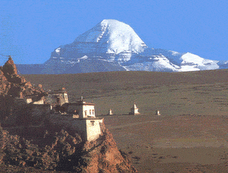http://www.fost-nepal.org/news.html http://www.fost-nepal.org/index.html FoST is pleased to announce that it has received the 2009 PCIA Special Achievement award. Every two years, the PCIA awards are distributed to the most innovative ideas among it's partner organizations. FoST was selected from 250 organizations to receive one of four awards. Sanu Kaji traveled to the PCIA Forum in Kampala, Uganda to accept the award and share ideas with other PCIA members. Sanu Kaji Shrestha (middle) with Brenda Doroski and John Mitchell from U.S. Government's Environment Protection Agency (US-EPA)
Wednesday
FoST Awarded the 2009 Special Achievement Award from the Partnership for Clean Indoor Air (PCIA)
Saturday
Crafted in Kathmandu
http://www.nepalitimes.com.np/issue/2009/06/13/Business/16026
The erosion of Kathmandu Valley's unique cultural heritage has prompted many to find ways to preserve it. There is a renaissance of Newari architecture in Bhaktapur and Patan, the tourism industry has pitched in with heritage hotels and cultural sight-seeing, and the handicraft business is doing its bit.
Now, there is a unique effort to support Kathmandu's artisans and craftsmen by helping sell their products in the local and international market. 'Crafted in Kathmandu' is not just a handicraft business, its founder Rosha Chitrakar hastens to clarify.
"Our goal is to help preserve the Valley's heritage, the skills, knowledge and resourcefulness of our artisans in creating art and home d?cor objects that are good enough to be shared in the world market," says Chitrakar.
The challenge for Chitrakar's 'Crafted in Kathmandu' brand is to pay for the protection of the Valley's built, living and natural heritage by the products and services of its artisans.
Chitrakar calls this a "plus revenue" business and is focussing on selling products to three distinct markets.
The first is the local market where people need various pots, vessels, jewelry, musical instruments, chariot-building skills and monument restoration capacity. The trend is towards restoring homes to their original
and operating them as bed and breakfast pensiones in the old city.
The second is the high end Nepali market such as hotels, homes of expatriates, corporate gifts, garden sculpture, home d?cor etc. This market has the highest growth potential because of the increasing tendency of identifying with one's heritage. Tourists and expatriates also increasingly look for hotels and homes that reflect the unique history and heritage of the Kathmandu Valley.
The third is the market for exports of Kathmandu artifacts to North America, Europe and East Asia. 'Crafted in Kathmandu' has a gallery outlet in North America that tells the story of how the artisans and crafts persons of the Kathmandu valley are restoring the World Heritage City. It sells products that have been designed and crafted to meet local demands.
Chitrakar explains that an example of this three-tiered marketing strategy is a potter making clay pots for local local yogurt whose family is also making terracotta garden animal figures and also ceramic bases for table lamps for the North American market.
"This keeps artisan families fully employed all year round, increasing their quality of life and ensuring that the skills are passed down to a new generation," says Chitrakar.
Crafted in Kathmandu's exhibition runs till 15 June at Dwarika Hotel, 11AM-7PM.
Wednesday
Pilgrimage Through Kham: A Medical Mission in Tibet
http://www.youtube.com/watch?v=JR3wDIQGXJE
email:upaya@upaya.org
This preview is a powerful rendering of Upaya Zen Center's Nomad Clinic, which was offered in Kham, Tibet, October, 2006, when a team of clinicians and Buddhist practitioners--led by Joan Halifax Roshi--offered basic medical services to the people of Kham.
Sara Nesson - Director/Producer
Tussi Kluge - Executive Producer
Saturday
Searching for Grass and Water: Tibet's Last Nomads
http://www.socialdocumentary.net/exhibit/Daniel_Miller/450
http://www.socialdocumentary.net/photographer/danielmiller
Wednesday
Some more scholarship info
On average, 950 Tibetan students graduate from different Tibetan schools in India every year. The Department of Education provides scholarships for further education in India to 150 - 200 of these students each year. This includes university and college courses as well as vocational training. SHERIG is also responsible for the selection of candidates for the University reserved seats for Tibetans provided by the Indian Government for professionally orientated courses. You will need to contact SHERIG and fill in an application form if you are interested in these seats. For more information on Department of Education scholarships for Tibetans wanting to study in India and abroad, have a look at http://www.tcewf.org/scholarships/index.html and at the announcements section at the top of the page. Tibetan Children's Village provides scholarships for higher education and vocational courses in India to people who have studied at TCV. Scholarships are generally only provided for full time regular courses recognised by the government of India. If you receive a large scholarship you may be required to serve the Tibetan community in exile for one to two years after completing your studies or training. Visit http://www.tibchild.org/TCV.htm for more details or contact the Scholarship section in Dharamsala on 01892-220357 or tcvho@vsnl.com Tibetan Homes Foundation provides scholarships for higher education and vocational courses in India to students who have studied at Tibetan homes Schools. FUR has instituted a Scholarship programme for graduate and undergraduate students. Special scholarships are also awarded for the advancement of Tibetan school children. This component of the scholarship supports the complete schooling of Tibetan youth in first class institutions across India. The Tibetan Scholarship Programme provides an opportunity to motivated Tibetan youth, for the pursuit of professional degrees in reputed institutions of higher education in India. These include the Indian Institutes of Technology, the Indian Institutes of Management and the All India Institute of Medical Sciences. The Scholarship covers the costs of the degree programme as well as financial support and guidance from the coaching to the examination. The Programme awards between five and ten scholarships to Tibetan students each year.http://www.empoweringvision.org/page.php?id=75&type=p
Sherig, Department of Education, Central Tibetan Administration.
Tibetan Children's Village (TCV)
Tibetan Homes Foundation
Foundation for Universal Responsibility of H.H. The Dalai Lama (FUR)

